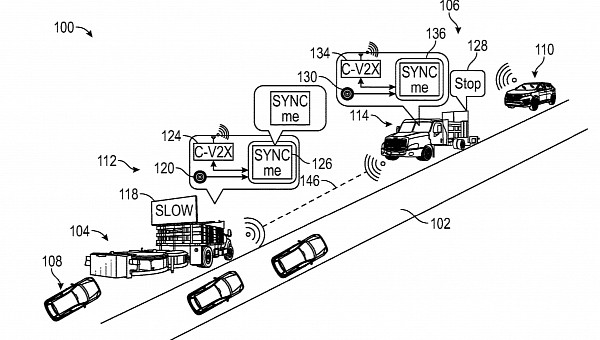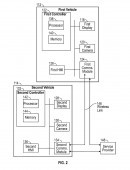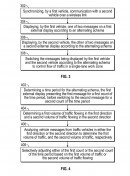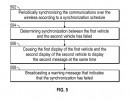Let’s be honest about it: traffic in work zones is typically a nightmare, especially when both directions are being guided to use the same lane either by an individual or by stop lights.
American carmaker Ford has come up with a brilliant idea that could turn the whole thing into a much more straightforward experience thanks to vehicles that would be able to exchange data.
First and foremost, Ford says in a patent called “synchronized work zone traffic management systems and methods” that workers could use a so-called attenuator vehicle, such as a truck or a roadside infrastructure unit, whose role would be to act as the command center.
This vehicle can be placed at the end of the work zone to guide the traffic workflow using a wireless link that would allow it to send data to the approaching vehicles.
From this point, only the sky is the limit in Ford’s concept, as the company envisions both simple and more complex implementations that would help drivers go through the work zones more conveniently.
For example, the carmaker says the data exchange between all vehicles would eventually provide drivers with messages like stop and slow, therefore offering guidance on what to do when approaching the work zone. Just like smart traffic lights, the system would always favor the direction with heavier traffic, but in some conditions, it can provide different signals to make room for emergency vehicles, for instance.
At first glance, the system isn’t necessarily a major breakthrough, but on the other hand, it could help eliminate the human factor when drivers need to go through work zones. Furthermore, the temporary traffic lights that are installed in these areas come with one major shortcoming: they can’t adapt to what happens on the road, so for instance, they wouldn’t be able to favor the heavy traffic or send the necessary signals to let an emergency vehicle pass.
The synchronization between all vehicles approaching a work zone would essentially maintain the traffic flow, and Ford says that drivers could even be provided with signals and messages in advance. In some cases, it could be possible for a driver to be told to slow down in an attempt to avoid a full stop.
The trucks that would play the role of a control center would be equipped with all kinds of technology to be able to make the right call on who gets to use the single available lane. Cameras could help monitor the traffic and determine what direction experiences heavier traffic.
Needless to say, Ford’s idea is just a patent for now, and as it typically happens with such technology, there’s absolutely no guarantee it would ever make its way to the real world.
First and foremost, Ford says in a patent called “synchronized work zone traffic management systems and methods” that workers could use a so-called attenuator vehicle, such as a truck or a roadside infrastructure unit, whose role would be to act as the command center.
This vehicle can be placed at the end of the work zone to guide the traffic workflow using a wireless link that would allow it to send data to the approaching vehicles.
From this point, only the sky is the limit in Ford’s concept, as the company envisions both simple and more complex implementations that would help drivers go through the work zones more conveniently.
For example, the carmaker says the data exchange between all vehicles would eventually provide drivers with messages like stop and slow, therefore offering guidance on what to do when approaching the work zone. Just like smart traffic lights, the system would always favor the direction with heavier traffic, but in some conditions, it can provide different signals to make room for emergency vehicles, for instance.
At first glance, the system isn’t necessarily a major breakthrough, but on the other hand, it could help eliminate the human factor when drivers need to go through work zones. Furthermore, the temporary traffic lights that are installed in these areas come with one major shortcoming: they can’t adapt to what happens on the road, so for instance, they wouldn’t be able to favor the heavy traffic or send the necessary signals to let an emergency vehicle pass.
The synchronization between all vehicles approaching a work zone would essentially maintain the traffic flow, and Ford says that drivers could even be provided with signals and messages in advance. In some cases, it could be possible for a driver to be told to slow down in an attempt to avoid a full stop.
The trucks that would play the role of a control center would be equipped with all kinds of technology to be able to make the right call on who gets to use the single available lane. Cameras could help monitor the traffic and determine what direction experiences heavier traffic.
Needless to say, Ford’s idea is just a patent for now, and as it typically happens with such technology, there’s absolutely no guarantee it would ever make its way to the real world.






